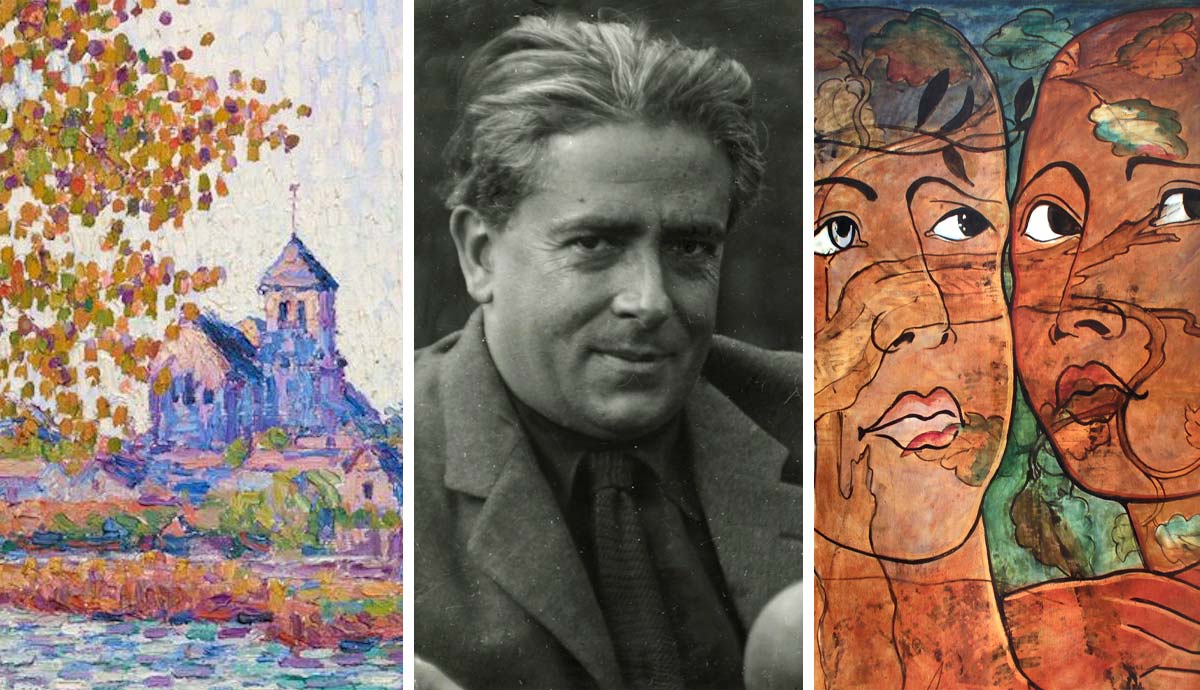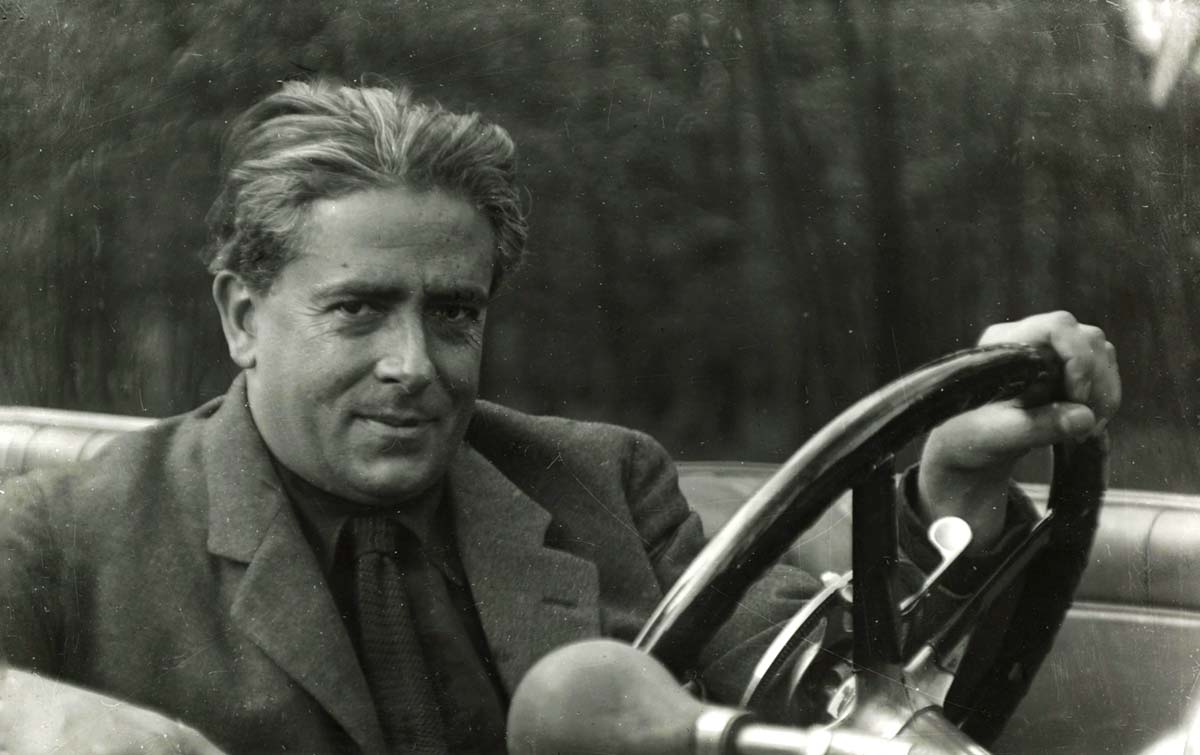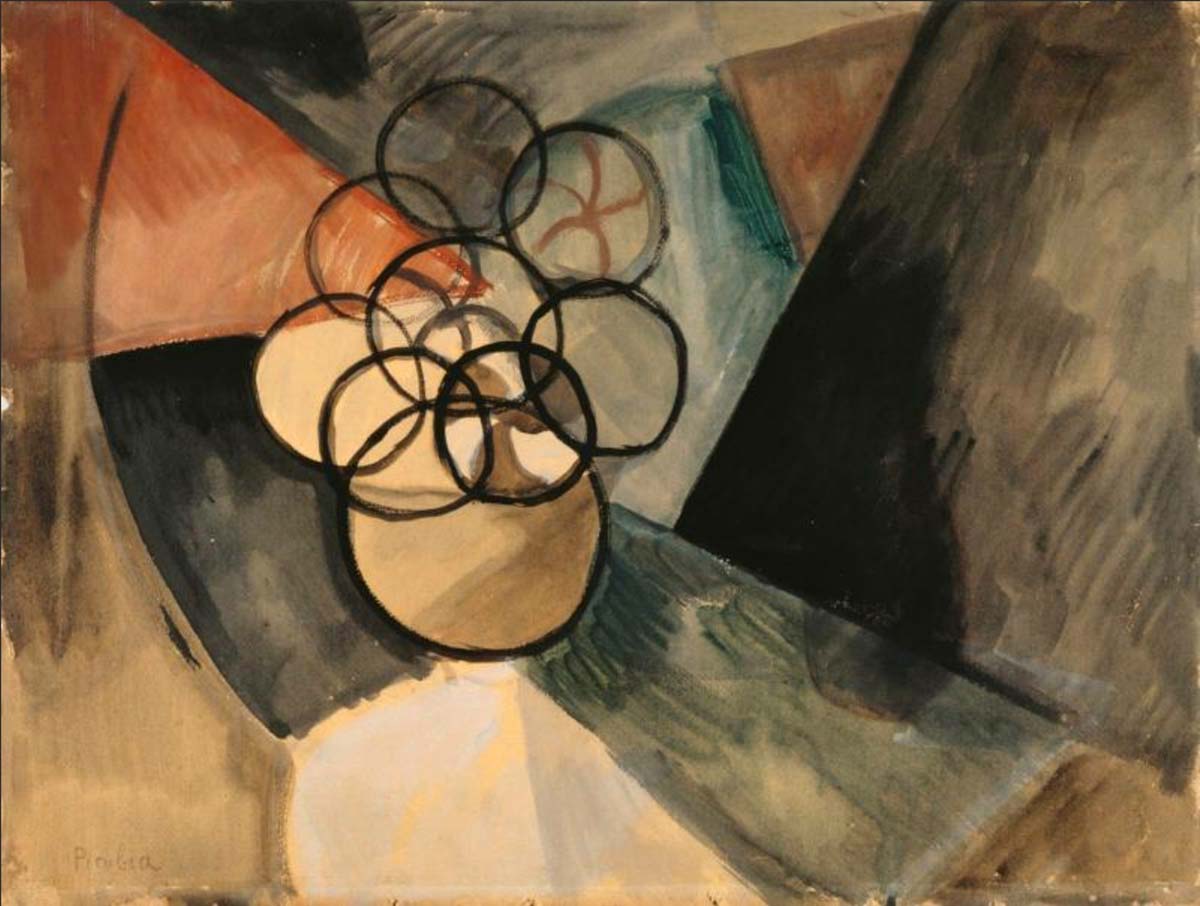
Francis Picabia (1879-1954) was an artist who experimented with many different styles throughout his lifetime and career. Though he started out as an Impressionist painter, he explored Fauvism, Cubism, Dadaism, and Surrealism. It was easy for Picabia to be active in and influence a multitude of artistic circles because there were so many artistic movements active in France in the early twentieth century. Picabia’s personal circumstances also allowed him to be freer than other artists of his time due to his family income. Below is an overview of Picabia’s movement through styles, as well as a window into what is known about Picabia as a person.
Francis Picabia’s Early Life

Francis-Marie Martinez de Picabia was born in 1879 in Paris to a Cuban diplomat father and a French mother. Because his parents both had significant wealth, he was free to pursue art without worrying about his career or making money. From an early age, Francis Picabia focused on experimenting with artistic design and enjoying the luxuries of a wealthy lifestyle. While he was afforded many privileges, his childhood was also stricken with tragedy when his mother died of tuberculosis when he was just seven years old.
Picabia stood out as an artistically gifted child, and these talents grew once he reached his teenage years. At one point as a teen, he took the paintings from the walls of his father’s home and swapped them with forgeries he had painted. He sold the original paintings for a profit, and when his father didn’t notice they were gone, decided that he should pursue a career in art. He attended École des Artes Décoratifs in Paris to study art with the goal of establishing his own studio and exploring many artistic styles.
Education and Impressionism

During his time at École des Artes Décoratifs and in the first five years of his career, Francis Picabia made a name for himself as an impressionist painter. Impressionism was a style developed in nineteenth-century France that involved depicting realistic and lively scenes, and usually landscapes. Picabia produced many of these works, such is his 1908 painting L’église de Montigny, effect d’automne.
Get the latest articles delivered to your inbox
Sign up to our Free Weekly Newsletter
Though Francis Picabia gained fame and attention from these impressionist paintings, they were not without their controversy at the time. Picabia was living a cushy lifestyle in Paris with his mistress at the time, and the authenticity and sincerity of his Impressionist work were debated by many. Many of his landscapes indeed seemed copied from postcards rather than observed on the scene, yet his pieces still showed a great deal of talent and promise in their execution. Dutch-French Impressionist painter Camille Pissarro is said to have been one of many who expressed disappointment or surprise at the direction young Picabia’s work appeared to be taking.
Early Abstract Works: Cubism and Fauvism

After a few years of making impressionist works, Picabia became immersed in the avant-garde scene in Paris and quickly took a liking to both the Cubist and Fauvist movements. An interesting detail about Picabia’s work during this time is that he created one of the first examples of abstract works in Western painting. He created his 1909 painting Caoutchouc when he was just thirty years old, and the piece remains one of the most historically important out of his vast body of work. Caoutchouc, a French word that translates as rubber, is made out of watercolor, gouache, and India ink on a cardboard canvas. This piece is also a playful exploration of the intersections between Cubism and Fauvism, both of which Picabia was interested in experimenting with at the time. The Western art world had yet to see significantly or purely abstracted works, making Picabia’s artwork one of the first.
There has been some debate as to the degree of abstraction present in Caoutchouc. Though the work appears to be purely abstract, there is some speculation that it could be an abstracted still life of a bowl of fruit. This speculation was supported by Picabia’s wife, Gabrièle Buffet-Picabia, who said other still lives of Picabia’s depicting fruit had compositional similarities to the great abstract work.
Picabia’s Proto-Dada Period and Influence on Dadaism

From 1915 to the early 1920s, Francis Picabia’s work underwent yet another shift in style. This time, Picabia explored Dadaism, an artistic movement that rejected capitalism and institutions through the use of non-traditional and nonsensical methods. Picabia first was introduced to Dada in New York by his friend Marcel Duchamp. He later went to Switzerland to work with the movement’s founder Tristan Tzara.
Picabia’s work within Dadaism was a major departure from his previous art, but this makes sense given his overarching refusal to conform or commit to a singular style of art throughout his life. His 1919 piece Mouvement Dada depicted the Dadaist alarm clock awaking the modern art scene, as well as the steps it took to get there. Though Picabia was mostly a fan of depicting automobiles throughout his life, he began drawing clocks and timepieces during and after his time in Switzerland. Francis Picabia, along with Man Ray and Duchamp, was among the first group of artists to introduce the Dada movement to the world and they influenced much of the Dadaist and Surrealist art for years to come.
Leaving Dada and Exploring the Surreal

Though Francis Picabia was an influential figure in the Dadaist movement, he ended up leaving Dada in a dramatic fashion in 1921 after denouncing the movement for no longer seeming new to him, a sentiment he expressed often throughout his career. Though he mostly stuck to drawing while exploring Dadaism, he returned to painting and began to adopt Surrealism as an artistic style. Picabia’s works from this period are perhaps some of his most famous, including his Transparencies series.
Picabia’s surrealist Transparencies were painted between 1929 and 1932 and enjoyed great success both during and after the artist’s lifetime. Works like Aello (1930) were oil paintings with transparent figures superimposed over natural and surreal scenes. As the years went on, the paintings in this series became increasingly intricate. Before an exhibition of his work in 1930, Picabia stated, “These transparencies, with their pockets of obscurity, allowed me to express my innermost desires […] I wanted a painting where all my instincts could flow freely.” These works set a huge precedent for modern art, as layering and sampling have become more popular as painting techniques over the years.
Friendships with Other Artists Throughout the Years

Part of the reason Francis Picabia was able to be so influential, even during his lifetime, is because of the friendships, partnerships, and business relationships he fostered with other artists. His close friendship and artistic partnership with Man Ray and Marcel Duchamp contributed to his status as a major influential figure in the Parisian avant-garde. In fact, Duchamp was also fascinated by Picabia’s wife Gabrielle Buffet, a musician who had a great influence on Picabia’s art.
Because Picabia valued change and experimentation in style, his participation in social circles with other artists was crucial to the development of his craft. In addition to Man Ray and Duchamp, Picabia also associated with artists like Beatrice Wood, Camille Pissarro, and Walter and Louise Arensberg. His involvement and partnership with André Breton were the catalysts for his participation in the Surrealist movement.
Francis Picabia’s Later Years and Legacy

In Francis Picabia’s later years and until his death in 1954, he changed style yet again from the surrealist style employed in the Transparencies series. Branching off of the nudity depicted in some of his surrealist work, Picabia painted nudes in a more classic style throughout the 1940s, with great success, though some critics referred to their style as ‘kitsch.’ True to his philosophy, the artist also spent a great deal of time painting abstract pieces late in life, such as a series of paintings involving many black dots on a colorful background. Though these pieces garnered some interest, his popularity declined greatly in the years before he died as people were less interested in his current artistic style than those he had explored previously. In 1954 in Paris, he died in his family home, the same place he was born.
Francis Picabia’s legacy is as a key figure in the conception of many different art movements, including Dadaism and Surrealism. Though he refused to conform to one artistic style, the Transparencies remain some of his most famous and valuable works, with his 1929 work Pavonia recently auctioning for almost 10 million euros. Between producing one of the first examples of true abstraction in modern art with his piece Caoutchouc to employing a technique of sampling in painting years before it was popularized, Francis Picabia was truly a trailblazer.








